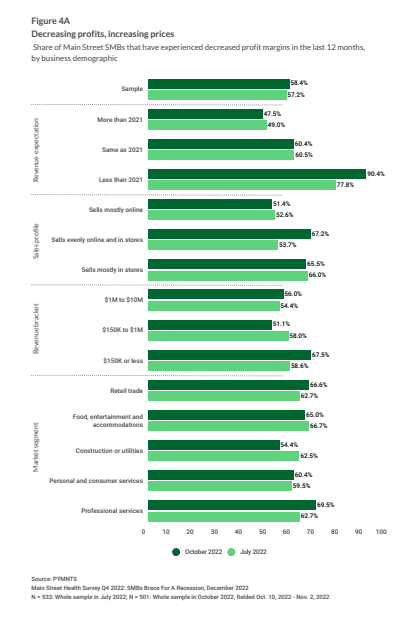CPI Shows Main Street Small Business Price Hikes Successful, for Now

Inflation data — though a cooling down is evident — shows Main Street small businesses’ price hikes are sticking.
At least for now. But the runway may be shortening for some sectors of the Main Street economy. In that case, they’re going to have to find some ways and means by which they can boost margins or at least keep them stable.
As reported Thursday (Jan. 12), the December Consumer Price Index report from the Bureau of Labor Statistics has a headline number that estimated that the inflation rate slowed to 6.5%. We’re down from recent peak levels that were north of 9.5%.
A Slowdown in Price Increases
Dig a bit deeper, and the data shows, for month-to-month activity (where the “overall” December tally showed a 0.1% decline), that there’s a “pricing increase slowdown” in the works. Food pricing hikes were down to 0.3%, where increases had been at a recent peak of 0.8% in September (over August levels); food consumed away from home — that includes restaurants, was up 0.4% in December and that was up 0.9% just a few months ago.
Growth in the services industry has remained at or slightly above recent levels, at 0.5% pricing increases, but that’s down from 0.8% as recently as September.
On the face of it, that’s somewhat good news for the end consumer. We’ll know more about what’s going on with Main Street small to midsized business (SMB) margins when the Producer Price Index is released later this month. The PPI helps get a sense of how the “inputs” that go into running an enterprise are trending and whether they are getting more expensive and by how much. We may see a mismatch here, as the aforementioned price hikes may not be enough to counter the input pressures, which means margins suffer.

In the most recent edition of our Main Street surveys, we found that the overall share of firms that increased prices in the last three months remained at approximately 60%, headed into the end of the year. At the same time, a significant majority of companies in the retail, services and food trade — the sectors noted above that are seeing pricing hike “slowdowns” — have seen margin pressure.
One way to combat the pressure is to reduce costs, but only 11% of the companies that we surveyed have said that they’ve tackled that strategy and only 13% said they’d increased productivity. The implication here, then, is that most Main Street small businesses have been relying on passing input costs along to consumers in the form of higher prices.
These same companies are going to have to pivot to focus on internal processes and back-office functions to wring out some new efficiencies and margin improvement.
There’s some recognition of this fact: 13% of Main Street SMBs don’t plan on investing in digital innovations, setting the expectation that many of them certainly will make those investments.
Looking ahead, the top areas where firms plan to innovate in the next 12 months are AP/AR integration and enterprise resource planning, at 25% each.
